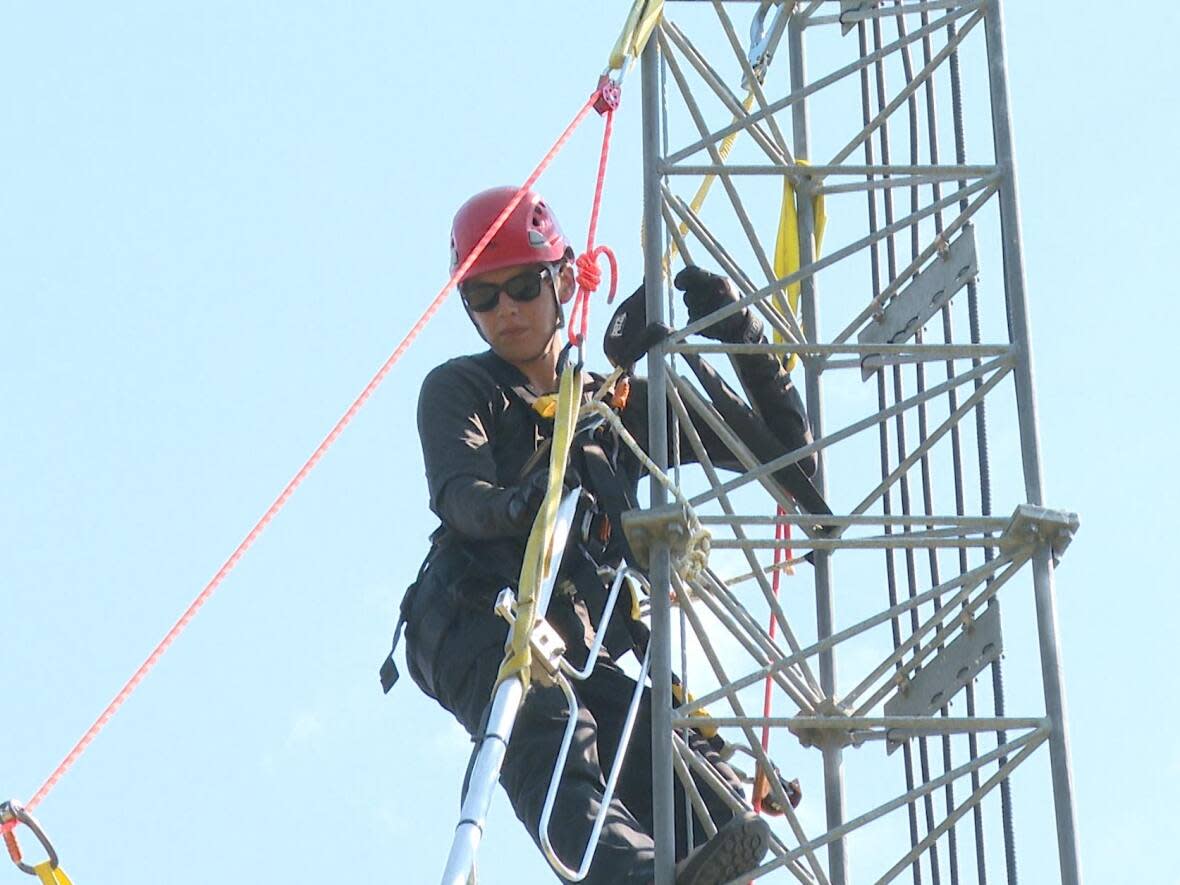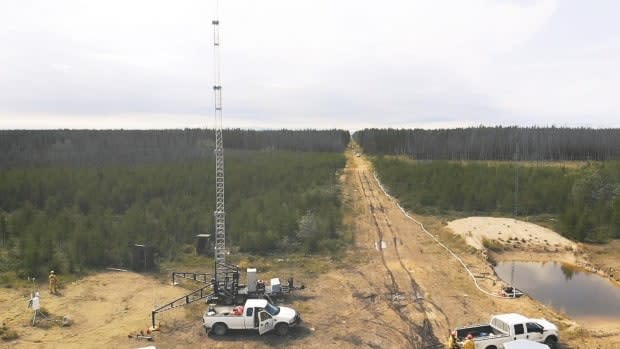N.W.T. radio tower technicians learn high-altitude rescues in Fort Smith

You're balancing on a steel rung almost 100 meters in the air, your safety net is two claw-like rebar hooks attached to your safety harness with double-locking carabiners. Now you have to rescue your partner who may or may not be conscious.
That's what radio technicians with the territorial environment department had to imagine during Tower Competent Climber & Rescue training this week in Fort Smith, N.W.T.
The hands-on training prepares the technicians to respond to emergencies on towers, multiple stories off the ground.
They learn how to get to a patient, and the rope systems needed to move a patient to the ground. The training is consistent with the NATE Tower Climber Fall Protection Training Standard.
Shannon Freund has been a radio technician for five years, and is prepared to deal with many different situations. This is third time taking the course.
"We're basically learning how to safely climb the tower," said Freund, "and using mechanical devices to make [the tecnicians'] jobs easier."
The radio technicians need to service and maintain about 50 towers across the territory, ranging from 15 to more than 91 metres in height. They're radio towers, weather stations, and fire watch towers, which are now being equipped with cameras to monitor potential fire dangers.

Keeping the technicians trained up is an important aspect of the job, said Craig Gerrard a trainer with Raven Rescue Safety Medical, which delivers the tower rescue program.
Gerrard, who lives on Vancouver Island, said the height of the towers isn't the only thing technicians need to watch out for.
"Dangers of the job can be just environmental, electricity and just remoteness. The heat like we are experiencing today — the job is quite exerting, so you have to keep that in mind," said Gerrard.
Freund agrees.
She was servicing a radio station in Colville Lake, N.W.T., last week when a muskox came over the hill to check them out.
"He was probably 30 feet (nine metres) in front of us," said Freund. "He was super curious, looked at us, and then turned around, thankfully.
"Yeah, that was pretty wild."
Servicing and maintaining towers across the territory is a part of fire territory's fire mitigation strategy. Radio technicians need to take the mandatory training every three years to get re-certified.
As of Friday evening, there were 90 active wildfires burning in the N.W.T.


